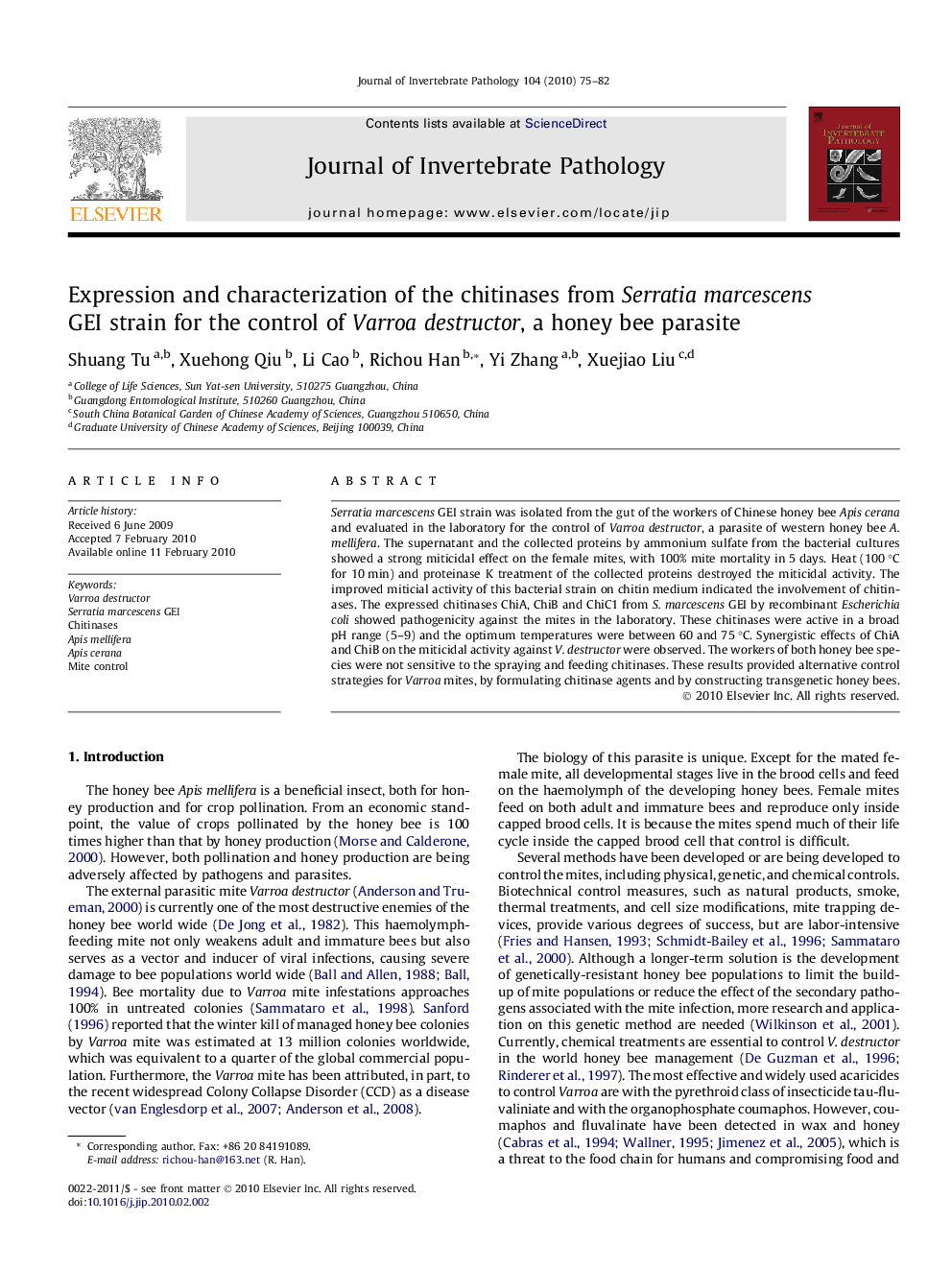| Article ID | Journal | Published Year | Pages | File Type |
|---|---|---|---|---|
| 4558246 | Journal of Invertebrate Pathology | 2010 | 8 Pages |
Serratia marcescens GEI strain was isolated from the gut of the workers of Chinese honey bee Apis cerana and evaluated in the laboratory for the control of Varroa destructor, a parasite of western honey bee A. mellifera. The supernatant and the collected proteins by ammonium sulfate from the bacterial cultures showed a strong miticidal effect on the female mites, with 100% mite mortality in 5 days. Heat (100 °C for 10 min) and proteinase K treatment of the collected proteins destroyed the miticidal activity. The improved miticial activity of this bacterial strain on chitin medium indicated the involvement of chitinases. The expressed chitinases ChiA, ChiB and ChiC1 from S. marcescens GEI by recombinant Escherichia coli showed pathogenicity against the mites in the laboratory. These chitinases were active in a broad pH range (5–9) and the optimum temperatures were between 60 and 75 °C. Synergistic effects of ChiA and ChiB on the miticidal activity against V. destructor were observed. The workers of both honey bee species were not sensitive to the spraying and feeding chitinases. These results provided alternative control strategies for Varroa mites, by formulating chitinase agents and by constructing transgenetic honey bees.
